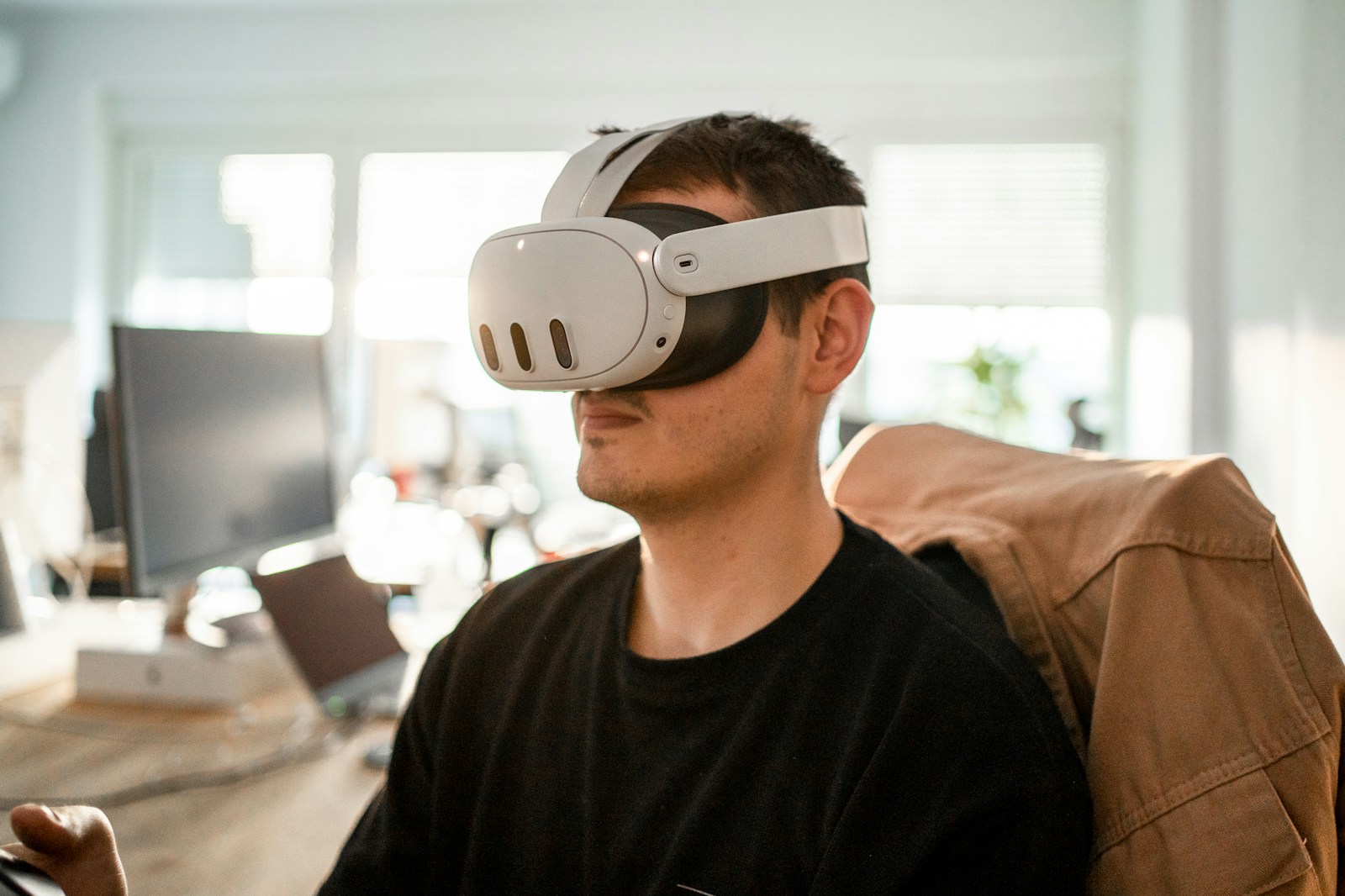The term “Metaverse” refers to a collective virtual shared space that is created by the convergence of virtually enhanced physical reality and physically persistent virtual reality.
It is a digital realm where individuals can interact with each other in real-time, engage in various activities, and immerse themselves in a simulated environment. The Metaverse extends beyond the confines of traditional virtual reality, offering a broad spectrum of interconnected virtual worlds, each with its unique attributes and functionalities.
In the Metaverse, users have the opportunity to create, explore, and customize their own virtual identities, known as avatars. These avatars act as digital representations of individuals, allowing them to navigate through the virtual landscape, interact with other users, and partake in different experiences. With the continuous advancement of technology and the growing popularity of virtual platforms, the concept of the Metaverse has gained significant traction, offering a new dimension of digital interactivity and social engagement.
Defining Digital Interaction
Digital interaction refers to the engagement and communication between individuals within the realm of the digital world. It encompasses the various ways individuals connect, communicate, and collaborate through digital platforms, such as social media, online forums, virtual reality environments, and messaging applications. In today’s interconnected society, digital interaction plays a pivotal role in shaping relationships, disseminating information, and fostering global connections.
As technology continues to advance, the landscape of digital interaction evolves to offer more immersive and seamless experiences. The shift towards virtual and augmented realities has transformed how individuals interact with digital content and each other. With the rise of avatars, virtual environments, and interactive interfaces, digital interaction is no longer limited to traditional text-based communications but has expanded to include multimedia expressions, spatial interactions, and real-time collaborations.
Evolution of Virtual Reality
Virtual Reality (VR) has undergone remarkable evolution since its inception. Initially, VR technology was primarily associated with science fiction novels and films, sparking the imaginations of many. However, significant advancements in the field of computer graphics and display technology have led to the realization of immersive VR experiences that were once deemed unattainable. This evolution has enabled users to transport themselves into digitally rendered environments, blurring the lines between the physical and virtual worlds.
Moreover, the evolution of VR technology has not only improved the quality of visual experiences but has also enhanced the overall sense of presence and interactivity. Early VR systems were often cumbersome and limited in their capabilities, requiring expensive equipment and specialized knowledge to operate. With advancements in hardware such as headsets and controllers, coupled with sophisticated software algorithms, VR has become more accessible and user-friendly than ever before. These innovations have enabled users to engage with virtual environments in a more intuitive and natural manner, fostering a deeper sense of immersion and engagement.
Augmented Reality in the Digital Space
Augmented Reality in the digital space has significantly transformed the way we perceive and interact with the world around us. By overlaying virtual elements onto our physical environment, AR has opened up a realm of possibilities across various industries, from gaming and entertainment to education and healthcare. The ability to seamlessly blend the real and virtual worlds has not only enhanced user experiences but also revolutionized how businesses engage with their customers.
Moreover, as AR technology continues to advance, we are seeing a rise in innovative applications that push the boundaries of what is possible. From interactive advertising campaigns that bring products to life, to educational tools that create immersive learning experiences, AR is paving the way for a more dynamic and engaging digital future. With the potential to reshape the way we navigate the digital landscape, augmented reality is set to play a crucial role in shaping the next phase of technological evolution.
Impacts on Social Interaction
The emergence of the metaverse has significantly transformed the landscape of social interaction in the digital realm. With the ability to create immersive and interactive virtual environments, individuals can engage with others in ways that were previously unimaginable. This has opened up new possibilities for connecting with people from around the world, fostering a sense of global community and breaking down barriers of physical distance.
Moreover, the metaverse has also allowed for the exploration of new identities and self-expression, enabling individuals to craft and mold their virtual personas in ways that empower creativity and authenticity. This has led to a redefinition of social norms and interactions, where individuals are free to explore diverse perspectives and experiences in a safe and inclusive digital space. As social interactions continue to evolve within the metaverse, it raises important questions about the implications of integrating virtual experiences into our daily lives and the potential impact on traditional forms of communication and relationships.

Economic Opportunities in the Metaverse
The metaverse presents a plethora of economic opportunities for businesses across various industries. From virtual real estate to digital assets and virtual goods, companies have the chance to tap into a new market that transcends physical boundaries. In the metaverse, businesses can reach a global audience, connect with consumers in creative ways, and explore innovative revenue streams that were previously unimaginable.
Moreover, the metaverse offers a platform for businesses to enhance customer engagement and immersive brand experiences. Virtual events, virtual showrooms, and interactive advertising are just a few examples of how companies can leverage the metaverse to build stronger relationships with their target audience. By embracing the metaverse, businesses can stay ahead of the curve, expand their market reach, and unlock new possibilities for growth and success.
Challenges and Concerns
Navigating the realm of the metaverse presents a myriad of challenges and concerns that must be addressed as this digital landscape continues to evolve. One pressing challenge is the issue of data privacy and security within these virtual environments. With the vast amount of personal information being shared and stored in the metaverse, there is a growing concern over the protection of user data and the potential for breaches or cyber-attacks.
Moreover, there is a significant concern surrounding the potential for increased social isolation and detachment from reality as individuals immerse themselves deeper into the metaverse. The allure of this digital space may lead to a decrease in face-to-face interactions and a distortion of real-world connections, impacting mental health and overall well-being. It is essential to consider the balance between the benefits of the metaverse and its potential negative effects on social behavior and relationships.
Technological Advancements Driving the Metaverse
As advancements in technology continue to rapidly progress, the driving force behind the evolution of the metaverse becomes increasingly apparent. The integration of artificial intelligence, blockchain, extended reality, and other cutting-edge technologies is reshaping the landscape of virtual environments. These technological advancements are enabling more immersive, interactive, and interconnected digital spaces, paving the way for a more seamless integration of the physical and virtual worlds.
Furthermore, the development of more sophisticated tools and platforms is empowering creators and developers to push the boundaries of what is possible in the metaverse. From highly realistic virtual simulations to innovative ways of socializing and conducting business, technology is at the forefront of driving these transformative changes. As the metaverse continues to expand and evolve, the role of technological advancements will play a crucial role in shaping its future trajectory.
Legal and Ethical Considerations
Navigating the complexities of the metaverse raises important legal and ethical considerations that must not be overlooked. As individuals immerse themselves in this digital realm, questions arise regarding issues of privacy, data security, and intellectual property rights. The blurred line between virtual and real-world interactions necessitates a thorough examination of how existing laws and regulations apply, as well as the need for potential new frameworks to address novel challenges.
Moreover, the issue of digital identity and representation in the metaverse presents ethical dilemmas surrounding consent, authenticity, and accountability. As avatars become extensions of our digital selves, the potential for identity theft, manipulation, and exploitation becomes a pressing concern. Striking a balance between enabling creative freedom and safeguarding against malicious activities calls for ethical guidelines that account for the unique dynamics of this evolving digital landscape.
Future Outlook and Potential Developments
The trajectory of the metaverse suggests a horizon filled with boundless possibilities and transformative developments. As technology continues to advance at an exponential rate, the metaverse is poised to reshape the ways in which we interact, work, and play in the digital realm. The fusion of virtual and physical realities will likely lead to unprecedented levels of immersion and interconnectedness, revolutionizing how we perceive and engage with the digital space.
In the coming years, the metaverse is expected to unlock new economic opportunities across various sectors, ranging from entertainment and education to commerce and communication. As businesses and creators delve deeper into the metaverse, innovative revenue models and collaborative ventures are likely to thrive, propelling the digital economy to new heights. Moreover, the potential developments in artificial intelligence, blockchain technology, and decentralized systems are poised to enhance the metaverse’s capabilities, paving the way for a future where virtual experiences are seamlessly integrated into our daily lives.
